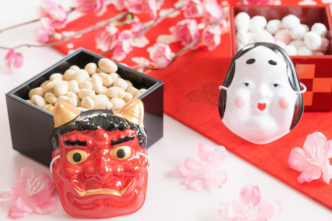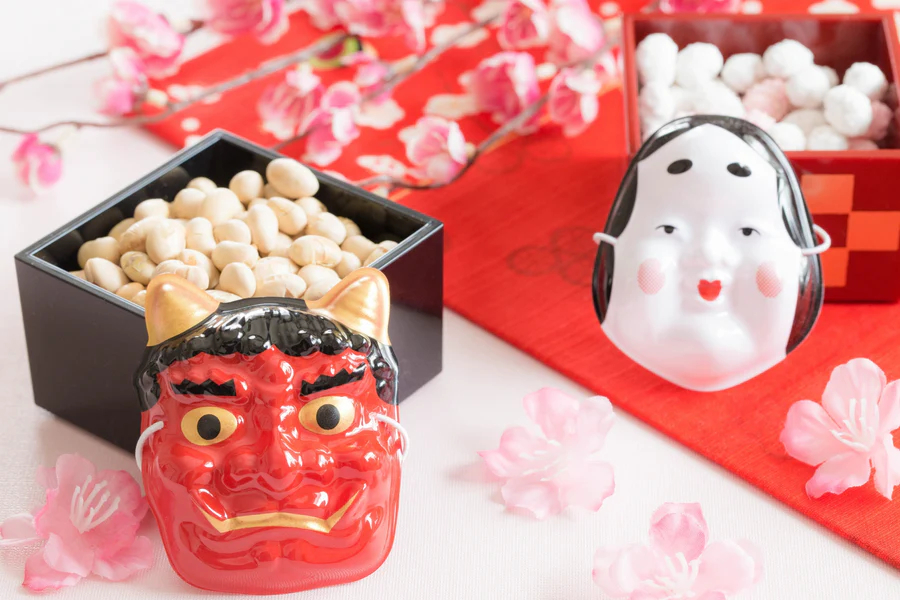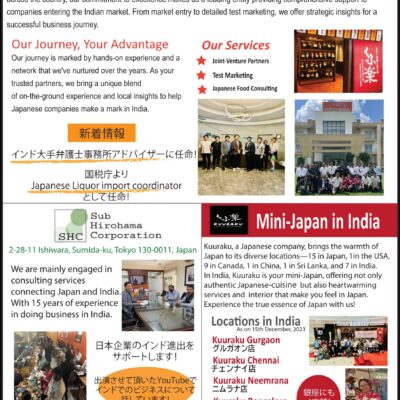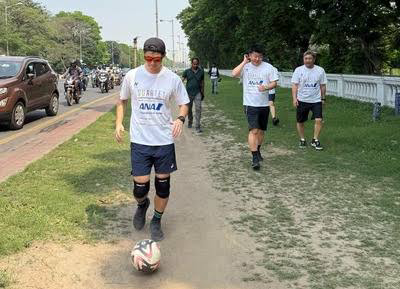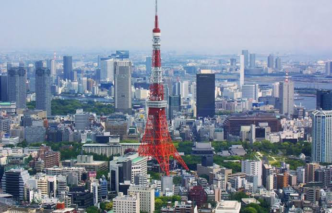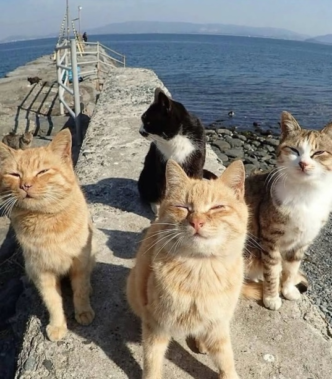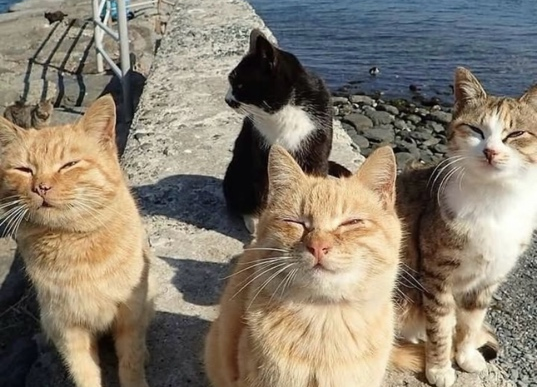A Time of Transition and Tradition
As February 2 arrives, Japan celebrates Setsubun (節分)—a lively festival that marks the transition from winter to spring. Rooted in ancient customs, Setsubun is a time for families, temples, and shrines across the country to drive away misfortune and welcome prosperity. The highlight of the festival is the “mamemaki” bean-throwing ritual, where people chant “Oni wa soto! Fuku wa uchi!” (“Out with demons! In with good fortune!”) while tossing roasted soybeans to expel evil spirits.
Mamemaki: Banishing Evil, Inviting Luck
The mamemaki (豆まき) ritual is the centerpiece of Setsubun celebrations. People scatter roasted soybeans—known as “fukumame” (福豆), or “lucky beans”—both inside and outside their homes to purify their spaces and ward off negative energy.
Traditionally, the head of the household, or someone born in the zodiac year, takes on the role of the “toshiotoko” (年男) or “toshiome” (年女) and throws the beans. In many public events, temples and shrines invite celebrities, sumo wrestlers, and priests to perform the ritual, attracting large crowds eager to catch the lucky beans.
Ehomaki: A Silent Wish for the New Year
Another significant tradition of Setsubun is the eating of ehomaki (恵方巻), a special thick sushi roll. Unlike regular sushi rolls, ehomaki is eaten in complete silence while facing the year’s lucky direction, determined by the traditional Chinese zodiac.
The seven ingredients inside an ehomaki, such as egg, cucumber, shiitake mushrooms, and seafood, represent the Seven Lucky Gods (Shichifukujin, 七福神) in Japanese folklore. Many believe that eating the roll without speaking ensures that one’s wishes and prayers for the year will come true.
Setsubun Celebrations Across Japan
Different regions of Japan celebrate Setsubun in unique ways:
- Sensō-ji Temple in Tokyo – This historic Buddhist temple in Asakusa hosts a grand bean-throwing ceremony featuring celebrities and monks.
- Yoshida Shrine in Kyoto – The shrine’s Setsubun festival is among Japan’s biggest, with traditional performances and thousands of visitors.
- Naritasan Shinshoji Temple in Chiba – Famous sumo wrestlers and actors participate in mamemaki, delighting festival-goers.
In some parts of Japan, instead of throwing beans, people use peanuts or perform local customs such as carrying burning torches to cleanse bad spirits.
Why Does Setsubun Matter Today?
While Setsubun has deep historical roots, it continues to be widely celebrated in modern Japan. Families still practice mamemaki at home, supermarkets sell ready-made ehomaki, and social media buzzes with photos of people partaking in the traditions.
The festival serves as a joyful reminder of renewal, luck, and community spirit, bringing people together to ward off negativity and embrace the promise of a fresh start. Whether through the playful act of bean-throwing or the silent wish with ehomaki, Setsubun offers a moment to reflect on the past and welcome the future with optimism.
Source: https://store.kyotohandicraftcenter.com/blogs/blog-news/oni-wa-soto-fuku-wa-uchi-is-it-a-spell
